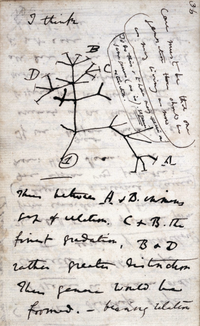
Photo from wikipedia
Developing a robust catalyst for the oxygen evolution reaction is the major challenge in the field of renewable energy. The difficulty comes from not only the low intrinsic activity, but… Click to show full abstract
Developing a robust catalyst for the oxygen evolution reaction is the major challenge in the field of renewable energy. The difficulty comes from not only the low intrinsic activity, but also the structural uncertainty of catalysts under the operating conditions. Therefore, finding the relationship between structural evolution and the OER activity is urgently required. At present, first-principles simulations have become a powerful tool to understand the mechanism of the OER at the atomic level. In this review, TiO2 , MnOx , and CoS2 are used as examples to demonstrate how first-principles calculations can predict the morphology of nanoparticles, explore the pathway of electrochemically induced phase transition, and resolve the structure of a heterojunction. With these new theoretical techniques, the structure-activity relationship of the OER for a complex catalytic system can be determined without experimental inputs. Such a bottom-up strategy holds great promise to reveal the active site and mechanism of a complex catalytic system from first-principles calculations.
Journal Title: ChemSusChem
Year Published: 2019
Link to full text (if available)
Share on Social Media: Sign Up to like & get
recommendations!